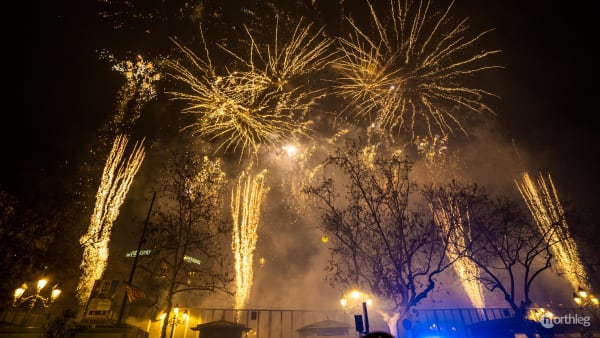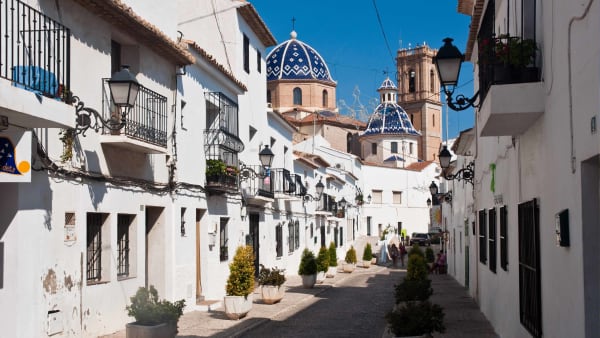History timeline
History timeline
Although the festival has deep and ancient roots in Valencian tradition, its modern form - how we know Fallas today - has developed mostly in recent times, in the course of the 20th century.
-
1693
First documented reference to Fallas
Don Rafael Solaz states in his manuscript that “many fallas or bonfires were set up in Valencia”. There is no mention of ninots in the text, so it is possible that the author was simply talking about street bonfires.
In any case, we can be sure that the tradition had been present in different forms for many years before that.
-
1886
Falleros protest
The falleros refused to pay the 60 pesetas fee that the local government had imposed for planting the sculptures in the streets. Just 30 years before, the fee had been 5 pesetas.
-
1898
Suspension because of Spanish–American War
As Spain and the US were entering a war, the festival was suspended.
-
1901
First prize awarded to the fallas
Valencia’s City Council awarded the first prize to a Fallas monument for the first time in history that year. This motivated falleros to create more and more aesthetically pleasing sculptures, to the point that a new profession was born: the artista fallero.
-
1927
First Tren Fallero
A tourist train line carrying visitors from Madrid was instituted on the occasion of Fallas. The last train of this kind ran in 1974.
-
1931
First Pregón
Marching bands surrounded the city and marched towards Plaza del Ayuntamiento announcing the beginning of the festivity. This so-called Pregón later evolved into today’s Crida.
-
1932
First Nit de Foc and Semana Fallera
The first official Semana Fallera (Fallas Week) was proclaimed that year. Even though the name referred to a week, the actual celebrative days were two, the 18th and 19th of March.
The first Nit del Foc was also established that year. The event was initially more like a nocturnal Mascletá (mostly loud firecrackers, not many fireworks). In 1942 the event started including a castillo de fuegos artificiales (large firework display).
-
1933
First Fallera Mayor
A Fallera Mayor was elected for the first time, even though a female representative of the festival had been elected under different names every year since 1929. The first Fallera Mayor Infantil would be elected in 1941.
-
1934
First Exposició del Ninot
The Ninot Exhibition to choose the Ninots Indultats began with a Fallas’ artist proposal.
-
1935
First Cabalgata del Ninot
At first the Cabalgata del Ninot was how the Fallas committees transported their ninots to the Exhibition. Over time, the event became independent from the Exhibition and more of a carnivalesque parade for the committees.
-
1937 - 1939
Suspension because of Civil War
Because of the Spainsh Civil War
, Fallas was suspended. Many Fallas committees donated the money raised to the Republican cause.
-
1939
Junta Central Fallera
The Junta Central Fallera was created, substituting the pre-existing Comité Central Fallero, created in 1928.
-
March 1940
First unofficial Ofrenda de Flores
The *
Fallera Mayor* and the festival representatives spontaneously decided to make an offering to the Virgin on Saint Joseph’s day. The following year, a group of clavariesas contributed to the tradition. The tradition grew and cemented itself so much that in 1945 it was incorporated as an official act.
-
1945
First Mascletà
The first Mascletà, intended as we know it today, was on 11th March. Mascletàs would start being celebrated daily (from 1st to 19th March) only in 1988.
-
1952
Fallas Infantiles
This was the first year in which children’s fallas were established and institutionalised as such.
Before that, children used to build their own fallas with cloth scraps. The kids would march around the neighbourhood asking for mats and old junk to burn while they sang the Cant de l’Estoreta (The Rug Song): Hi ha una estoreta velleta ‘pa’ la falla de Sant Josep, el tio Pep?
-
1967
Plantà
Although the concept of a Plantà existed before, this was the year when it was established as an event between the 15th and 16th of March, making Fallas longer than just two days.
-
1987
First Ofrenda Virgin statue
The Junta Central Fallera commissioned the first Virgin statue to be decorated with flowers. This tradition has since been upheld, and the flowers form a new colourful tapestry on the Virgin’s gown every year.
-
2016
Intangible Heritage of Humanity and Nit de l´Alba
The festival was declared part of the Intangible Cultural Heritage of Humanity by UNESCO.
The Nit de l´Alba tradition, initially celebrated in 1966-1967, was brought back on the official programme.
-
2020
Suspension because of COVID-19
Following the Ministry of Health’s directives, Fallas and all its events were suspended as a preventive measure to curb the spread of the virus.
-
2022
First Cordà in Valencia
The Cordà, traditionally from Paterna, arrived for the first time in Valencia.















